How to hide pipes in a bathroom: an overview of the best ways to mask a pipe
You must admit that even the most original design decision to decorate the interior of a bathroom can come to naught due to unattractive engineering communications. You can save the situation by skillfully masking unpresentable elements.
At the same time, it is not necessary to be a virtuoso in the construction business - it is enough to choose finishing and building materials, prepare tools and stock up on free time.
We will show you how to hide pipes in the bathroom, while providing access to maintain the system. Having studied our instructions, you can independently transform the bathroom, saving money on plumbing services.
The content of the article:
Material Requirements for Pipe Termination
The first thing to do before proceeding with the sealing of pipes in the bathroom is to determine the suitable material.
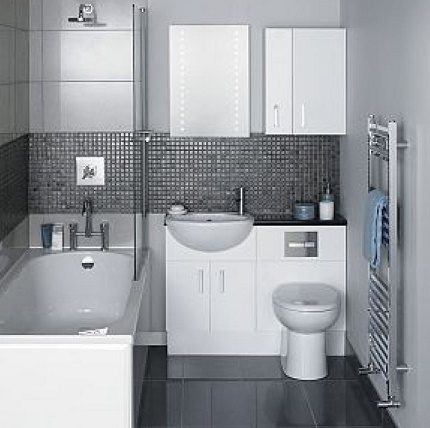
Criteria to be guided by when choosing a material:
- Lightness. So that the structure does not clutter up the already limited space, it is necessary to select materials for the fixation of which there is no need to construct heavy weight frames. You can use ordinary wooden battens or metal profiles.
- Moisture resistance. High humidity for the bathroom is a common occurrence. The materials used in its arrangement will certainly be affected by it. Therefore, preference should be given to those options that do not absorb moisture and do not deform when it settles on the surface.
- Sustainability to the effects of chemicals. Without the use of household "chemicals" to maintain cleanliness in the bathroom is quite problematic. During general cleaning, all vertical and horizontal surfaces are subject to processing.And therefore, the materials used for their lining should be able to tolerate direct contact with household cleaners without serious consequences.
To hide communications in the bathroom, MDF decorative panels, plastic wall panels, and sheets of moisture-proof drywall are excellent.

A variety of textures of gypsum 3D panels popular in recent years are able to imitate wood, brick, mosaic and create fancy patterns on the walls.
An important point: regardless of the type of facing material, before closing the pipes, it is worth making sure of their reliability. Closing a pipeline that has defects, there is a great risk that in the near future it will be necessary to disassemble the structure in an emergency.
Possible masking methods
There are many options that suggest how to hide pipes in the bathroom. They differ in the form and purpose of the structure being built, as well as the types of materials used. We suggest considering the most popular among them.
Method # 1. Drywall construction
Drywall is a practical and easy-to-use material, with the help of which it is easy to solve many problems of interior decoration and redevelopment of the room. This material will also be useful in order to close the pipes in the toilet and bathroom as aesthetically as possible.
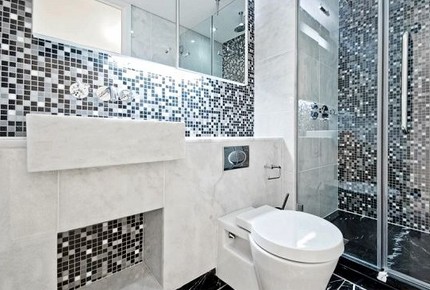
The main difference between moisture-resistant drywall and its traditional counterpart: its coating is impregnated with impregnated and antifungal compounds. Externally, the material differs only in color: moisture-resistant GCR are painted in green.
The basis for the drywall box is a frame assembled from rack profiles 27 x 60 mm in size and 26 x 27 mm rails.
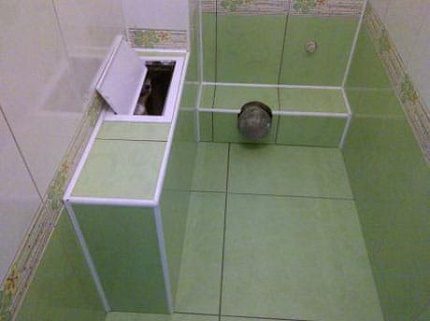
A decorative box is constructed in several stages:
- Markings are applied on the surface of the floor and walls. Having determined along the vertical surface the most protruding point on the communications, they retreat from it 3-5 cm and draw a line.By the same principle, they mark the horizontal surface.
- Along the drawn line by means of dowels, the rails of the guide profile are fixed. To them fasten the cross-members from the rack profile. The elements are connected by installing crabs, placing them at a distance of 15-20 cm.
- To amortize the structure in places where the frame abuts the communications, a special tape is laid.
- The frame is sheathed in strips of drywall. When installing the sheets, it is important to ensure that the front part is located outside. When twisting the screws, the caps must be "drowned" in the material within one millimeter.
- Make out a door for a box. In the finished design, a hole is cut under technical hatch. To make it invisible, the cut-out billet-door is put on hinges and covered with the body of the box with finishing.
- The surface of the box is rubbed with a grate and plastered, carefully closing all the seams.
To strengthen the strength of the corners of the box before applying putty, it is better to equip them with perforated corners. And to make the composition better fit on the joints of the sheets, before starting work from their edges, it is recommended to remove a small chamfer.

If the box is used for decorating pipes of a heating system or hot water supply, several holes must be made in its upper part. Through them, warm air will enter the room.
In order to quickly detect it in the event of a leak, a small hole should be provided in the lower part of the duct.
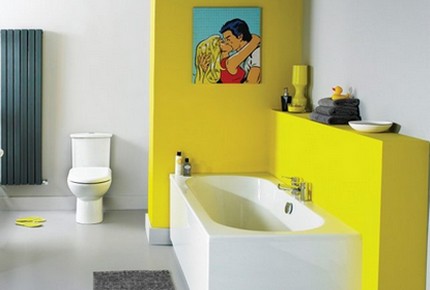
When fixing the profile to the floor, it is important to try to ensure that no displacement occurs at the time of drilling, since any error can affect the quality of the structure.
If the walls and floor of the bathroom are tiled, be extremely careful when drilling the coating, since under the influence of pressure-rotational movements it can crumble. To exclude such a nuisance, a piece of adhesive tape must be glued to the drilling area, and when working with a drill, the number of revolutions should be minimized.
With the help of a plasterboard box, you can arrange a screen under the bathtub. A variety of ways to mask the space under the bathroom is presented in this article.
The steps for masking communications during the installation of a hanging toilet in a mixed bathroom will be presented by the following selection of photos:
Method # 2. Tile decoration
This method is very similar to plasterboard pipe sheathing. But it involves a greater amount of labor. The main advantage of the tile box is a successful combination of aesthetic qualities and excellent moisture resistance of the structure.
Consider how to seal sewer and water pipes in the bathroom with ceramic tiles.
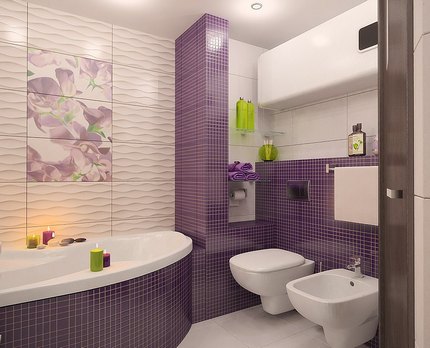
The basis for the manufacture of the box can be both a wooden and a metal frame. When using wooden elements before starting work, they must be treated with a moisture repellent.
To simplify the task and prevent installation errors, it is better to draw up a sketch of the future design, on which you need to specify the dimensions and designate the locations of the elements.
Approximate procedure:
- Measure the zone of passage of water and sewer pipes.
- A frame is constructed from wooden slats or metal profiles, fixing it to the floor, with the walls of the ceiling.
- The frame is sheathed with moisture resistant plywood or chipboard sheets.
- On the front side of the structure make a hole for the technical hatch.
- Plywood is glued with reinforcing mesh.
- Tiles are laid on top of the mesh. She is also pasted over with a service hatch.
- Tile joints are wiped and covered with antifungal mastic.
The shape of the constructed box largely determines the type of pipe laying. You can build a ledge under which it is convenient to hide the sewer pipes of the combined bathroom. In this case, you can even mount the toilet installation.
If desired, the box can even be brought to the level of the sink. Such a solution will provide an opportunity not only to hide all unsightly communications, but also to provide additional space for storing bottles with household chemicals.
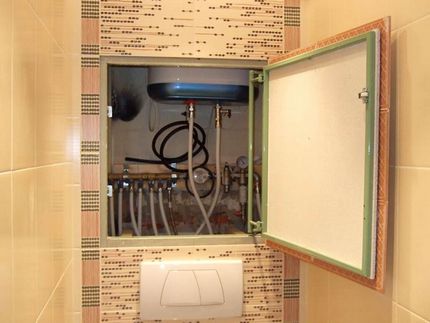
Arrangement of the inspection hatch is a prerequisite if the decorated part of the pipeline is equipped with valves, counters, or any other equipment elements.
Masking pipes with tiles and mosaics looks appropriate in bathrooms, especially if made of the same material made bathroom screen.
Method # 3. Closure with plastic panels
Decorative panels made of plastic are an easy-to-use and at the same time inexpensive option to hide communications. Presented on the construction market a wide variety of types, colors and options for execution allows you to create a design that harmoniously complements the already equipped interior.
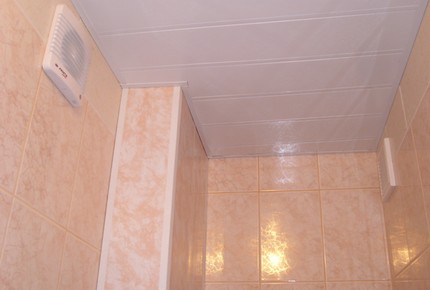
The only drawback of plastic panels is their low fire resistance. Although many manufacturers guarantee self-extinguishing of products, they are no less afraid of smoke than open fire. Therefore, in the bathroom, the pipes of which are decorated with plastic panels, you need to beware not only of fire, but also of regular smoking.
Installation of plastic panels is carried out on a pre-assembled frame, the basis for the manufacture of which are all the same metal profiles.Before sheathe the frame, first start molding is attached to it with screws.
Often in the construction of the frame for attaching plastic panels, they prefer to use lumber. They are easier to cut and process than a metal profile:
So that the head of the self-tapping screw is not visible, fixation is carried out through a shelf that is blocked by the next panel. Pre-cut blanks of plates are alternately brought into the bar, “stringing” row after row. Each panel is pushed to the maximum to the end, for reliability, fixing the free side with self-tapping screws.
When docking adjacent panels, it is important to ensure that their edges fit tightly into the locks of the installed elements. At the final stage of installation, an external molding is installed. The joints of the frame with the ceiling and floor are trimmed with the same slats.
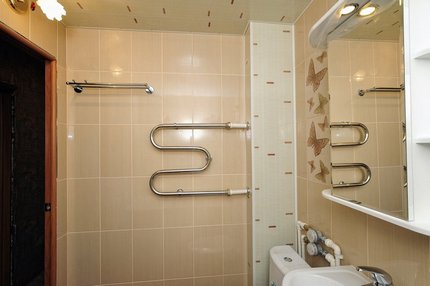
Method # 4. Blind option
Do you want to make pipes of communications invisible, but at the same time leave them free access? Blinds and shutters will help in solving the task. To get to the valve or counter, you just need to lift the curtain with just one movement of your hand, providing full access to the equipment.
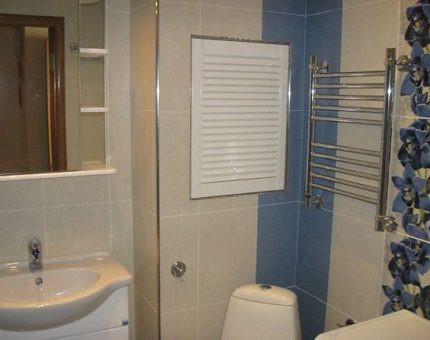
The main advantage of such structures is that they do not "eat" the space of the bathroom, and therefore are suitable for rooms of any size. If the width of the blocked opening is less than 52 cm, the simplest version of the systems on the cord mechanism is used. For wider openings - systems equipped with spring mechanisms.
When planning to install a motorized system on an electric cornice, the design is positioned so that the engine is housed in a sealed enclosure.
As a support for installing roller shutters, the following can act:
- drywall construction;
- plastic box;
- false wall.
There are two mounting options: with the placement of the box inside and installing it outside. The first is used if it is possible to make a corresponding recess in the opening. The second is chosen when communications are located in the immediate vicinity of the opening.
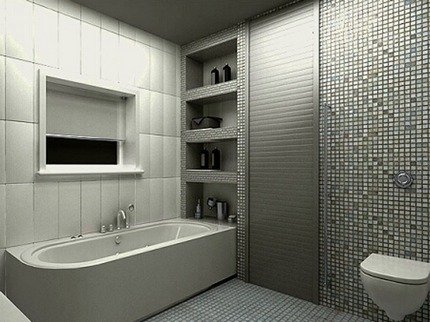
Even slight distortions of the structure will not allow the canvas to move freely along the rails, which will entail a quick failure of the system. This problem can be prevented by leveling surfaces or by constructing a duct.
When installing a manual model with a manual drive, the first thing to do is assemble the box in accordance with the manufacturer's instructions and install the internal shaft. Then the cassettes are fixed depending on the characteristics of the opening on the ceiling or wall.
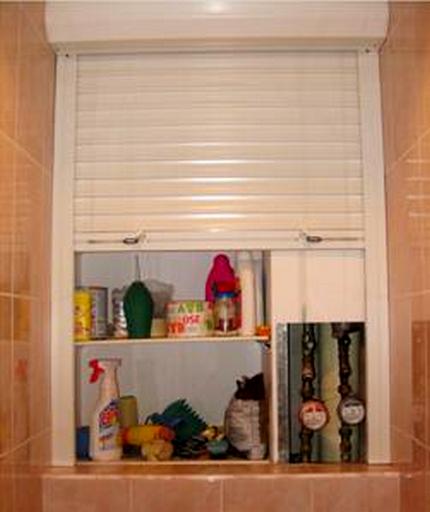
It is not difficult to make a part to close the lower part of the opening in order to sew up the passage of the horizontal sewer pipe. It is necessary in accordance with the width of the opening to cut the blank from the chipboard. It should be equipped with a recess for approaching the toilet.
When determining the height of the part, they are guided by the length of the blade. So for an opening with a height of 240 cm with a length of structure including a box with a canvas of 180 cm, it will be necessary to cut a part with a height of 240-180 = 60 cm.
A radical way to hide pipes
One of the most time consuming ways is pipe routing in the bathroom in a hidden way. But it makes it possible to "kill two birds with one stone": hide unsightly communications and make the bathroom more spacious.
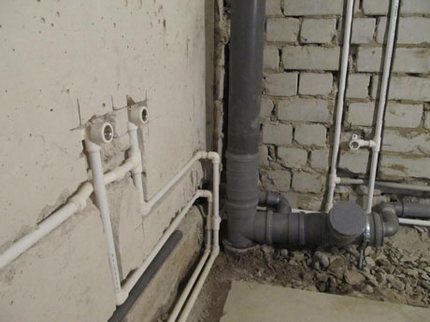
In addition to the complexity, a key disadvantage of this method is the inability to quickly get to the pipes in the event of an emergency.
When implementing the method, it is very important to provide measures that minimize the risk of leaks:
- no plug-in connections in the wall should be;
- apply for laying polypropylene pipes and fittingswhich are convenient to solder into one whole;
- Strobes for laying hot and cold pipes must be equipped with thermoflex or foam rubber sleeves.
The use of a sleeve made of insulating material will relieve the cold pipes from the condensation that forms and allow the hot pipes to expand under the influence of temperature.
Masking horizontally laid pipes
Closing horizontal communications in a toilet or bathroom is the easiest way box constructions with a covering from a chipboard, plywood or plastic. To create such a structure, markings are performed on opposite sections of the wall.
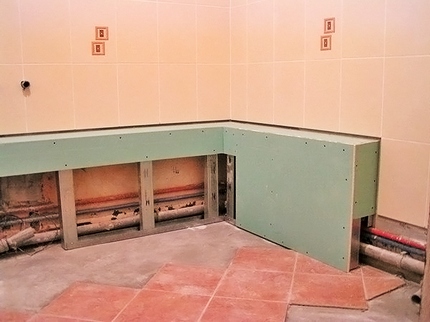
A guide profile is fastened along the marking line using self-tapping screws. Jumpers are inserted into it, maintaining an equidistant distance of 60 cm. Pre-cut blanks are attached to the assembled frame.
If desired, you can build a removable structure. To do this, in accordance with the height and width of the pipes, boards are cut to create a vertical and horizontal plane. They are fastened together by a perpendicular “corner”. The assembled structure is simply placed above the pipe placement.
In addition to the above options for masking pipes in bathrooms, there are original options:
Conclusions and useful video on the topic
To hide the pipes, materials such as plastic panels, drywall sheets or blinds are suitable. Features of the installation of structures in the following videos.
We close the pipes with drywall:
Making a box of plastic panels:
Mounting the cabinet with shutters:
Having shown a little imagination and having made some efforts, it will turn out to hide any unsightly communication systems or decorate them, turning into an original interior decoration.
Looking for a custom way to mask pipes in a bathroom? Or is there an experience in the decoration of communications? Please leave comments on the article and ask questions. The feedback form is located below.

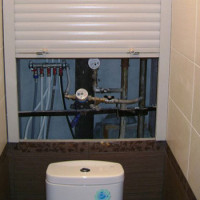 How to arrange a pipe box in the toilet: an overview of the best ways to mask the pipeline
How to arrange a pipe box in the toilet: an overview of the best ways to mask the pipeline 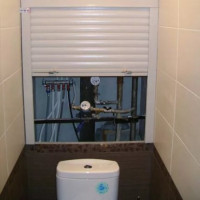 How to close the pipes in the toilet: how best to hide and hide the pipeline
How to close the pipes in the toilet: how best to hide and hide the pipeline 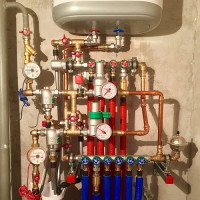 Piping in the bathroom: analysis of hidden and open piping schemes
Piping in the bathroom: analysis of hidden and open piping schemes 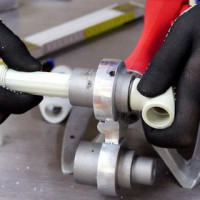 DIY welding technology for polypropylene pipes: an overview of methods and nuances
DIY welding technology for polypropylene pipes: an overview of methods and nuances 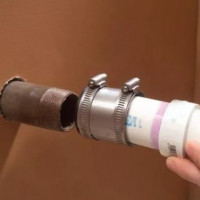 The connection of plastic pipes with metal: an analysis of the best methods and mounting nuances
The connection of plastic pipes with metal: an analysis of the best methods and mounting nuances 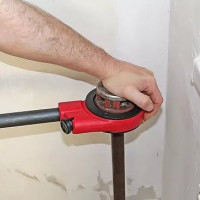 How to thread a pipe: a detailed overview of the main methods
How to thread a pipe: a detailed overview of the main methods  How much does it cost to connect gas to a private house: the price of organizing gas supply
How much does it cost to connect gas to a private house: the price of organizing gas supply  The best washing machines with dryer: model rating and customer tips
The best washing machines with dryer: model rating and customer tips  What is the color temperature of light and the nuances of choosing the temperature of the lamps to suit your needs
What is the color temperature of light and the nuances of choosing the temperature of the lamps to suit your needs  Replacement of a geyser in an apartment: replacement paperwork + basic norms and requirements
Replacement of a geyser in an apartment: replacement paperwork + basic norms and requirements
Hiding pipes in the bathroom is generally dusty. With us they are located so that both horizontal and vertical intersect. It turns out that the overlap will go at the intersection of the pipes, because of this, the bath was very narrowed in the area. We hid it for a long time, we plan to repair it soon, and we’re just thinking of calling the masters to do it right, otherwise it’s not an option to do independence here :) but I read a lot of useful information.
In our apartment, the bathroom is quite small, so I had to rack my brains over how to hide the pipes and not clutter up the remaining space. As a result, they made a box, if possible not too protruding. Facing chose a light tile to visually be wider. Well, I had to make a small door in the box, in case of leaks and for counters. It came out neatly.
We, like most people, are faced with this problem. We have Khrushchev's apartment, in which the bathroom is located in conjunction with the toilet. Space is catastrophically small. Therefore, the repair was entrusted to professionals. As a result, it was possible to maintain the internal dimensions in almost standard proportions. Thanks to the change in the initial laying of pipes.
I am afraid to hide the pipes under the tile. Some leakage and everything will have to be broken. Are there any collapsible designs? Can drywall be dismantled without breaking?
Hello. You can install plastic boxes (but without tiles) or protect hl from moisture using various finishing agents. But in general, it would be nice to see the arrangement of your pipes and understand which box you want to make.
Largely solves the problem of installing hl with minimal pieces, then with a small leak, you won’t have to break a whole sheet, provided that a significant part of the hl does not have time to get saturated with moisture, and only a small piece can be replaced.